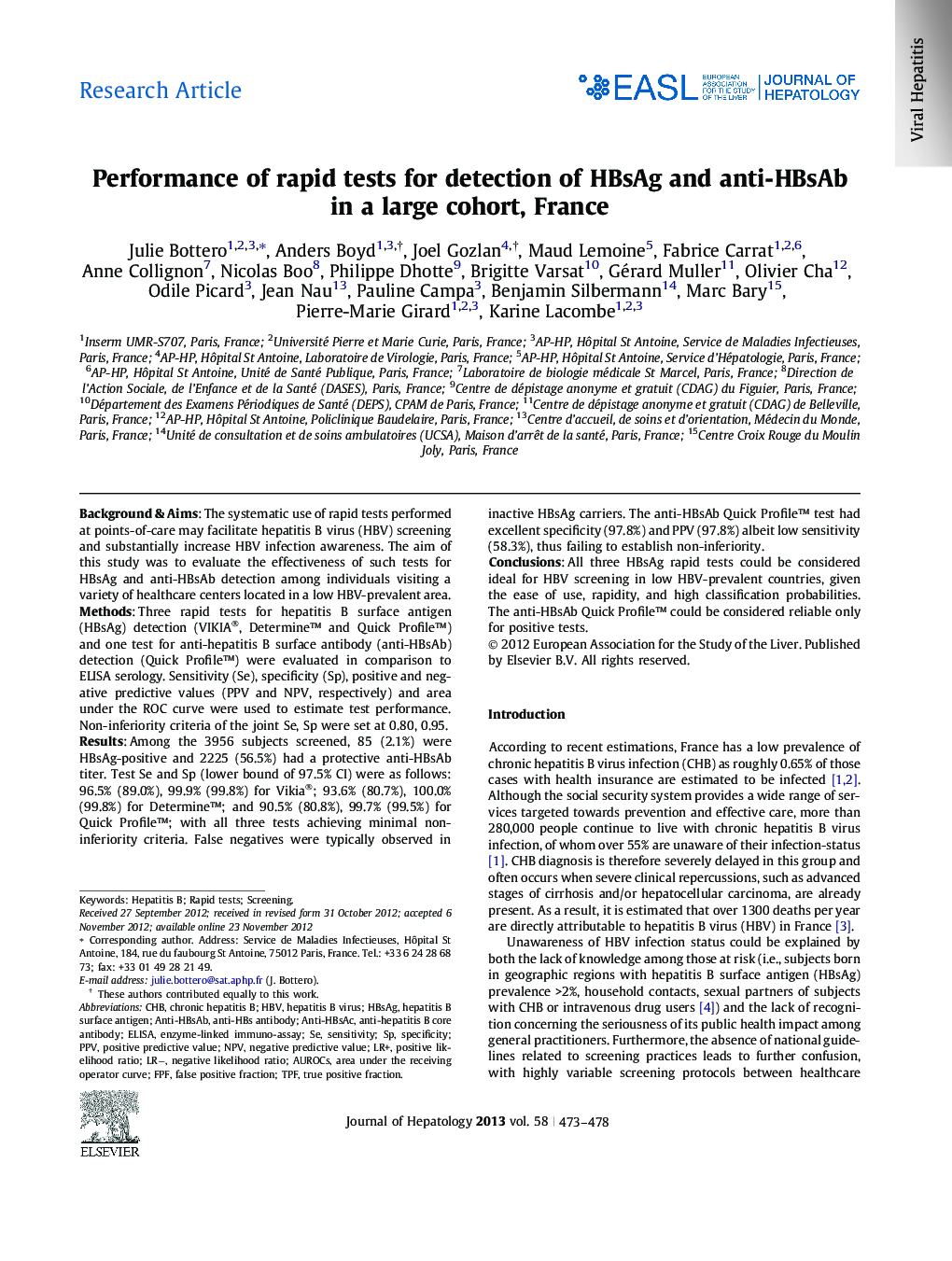| Article ID | Journal | Published Year | Pages | File Type |
|---|---|---|---|---|
| 6105688 | Journal of Hepatology | 2013 | 6 Pages |
Background & AimsThe systematic use of rapid tests performed at points-of-care may facilitate hepatitis B virus (HBV) screening and substantially increase HBV infection awareness. The aim of this study was to evaluate the effectiveness of such tests for HBsAg and anti-HBsAb detection among individuals visiting a variety of healthcare centers located in a low HBV-prevalent area.MethodsThree rapid tests for hepatitis B surface antigen (HBsAg) detection (VIKIA®, Determine⢠and Quick Profileâ¢) and one test for anti-hepatitis B surface antibody (anti-HBsAb) detection (Quick Profileâ¢) were evaluated in comparison to ELISA serology. Sensitivity (Se), specificity (Sp), positive and negative predictive values (PPV and NPV, respectively) and area under the ROC curve were used to estimate test performance. Non-inferiority criteria of the joint Se, Sp were set at 0.80, 0.95.ResultsAmong the 3956 subjects screened, 85 (2.1%) were HBsAg-positive and 2225 (56.5%) had a protective anti-HBsAb titer. Test Se and Sp (lower bound of 97.5% CI) were as follows: 96.5% (89.0%), 99.9% (99.8%) for Vikia®; 93.6% (80.7%), 100.0% (99.8%) for Determineâ¢; and 90.5% (80.8%), 99.7% (99.5%) for Quick Profileâ¢; with all three tests achieving minimal non-inferiority criteria. False negatives were typically observed in inactive HBsAg carriers. The anti-HBsAb Quick Profile⢠test had excellent specificity (97.8%) and PPV (97.8%) albeit low sensitivity (58.3%), thus failing to establish non-inferiority.ConclusionsAll three HBsAg rapid tests could be considered ideal for HBV screening in low HBV-prevalent countries, given the ease of use, rapidity, and high classification probabilities. The anti-HBsAb Quick Profile⢠could be considered reliable only for positive tests.
